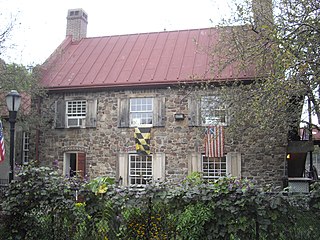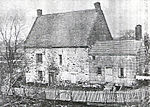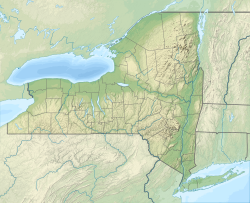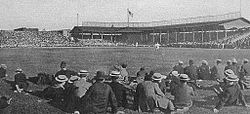
The Los Angeles Dodgers are an American professional baseball team based in Los Angeles. The Dodgers compete in Major League Baseball (MLB) as a member club of the National League (NL) West Division. Established in 1883 in the city of Brooklyn, which in 1898 became a borough of New York City, the team joined the NL in 1890 as the Brooklyn Bridegrooms and assumed several other monikers before finally settling on the name Dodgers in 1932. From the 1940s through the mid-1950s, the Dodgers developed a fierce crosstown rivalry with the New York Yankees as the two clubs faced each other in the World Series seven times, with the Dodgers losing the first five matchups before defeating them to win the franchise's first title in 1955. It was also during this period that the Dodgers made history by breaking the baseball color line in 1947 with the debut of Jackie Robinson, the first African American to play in the Major Leagues since 1884. Another major milestone was reached in 1956 when Don Newcombe became the first player ever to win both the Cy Young Award and the NL MVP in the same season.

The Old Stone House is a house located in the Park Slope neighborhood of Brooklyn, New York City. The Old Stone House is situated within the J. J. Byrne Playground, at Washington Park, on Third Street between Fourth and Fifth Avenues. Gowanus Creek once ran nearby, but today the southeastern branch of the Gowanus Canal ends 1,300 feet (400 m) west of the house.

The Subway Series is a series of Major League Baseball (MLB) rivalry games played between the two teams based in New York City, the Yankees and the Mets. Previously, this applied to the Giants and Dodgers as well, before they moved out of New York City. Every historic and current venue for such games has been accessible via the New York City Subway, hence the name of the series.

Ebbets Field was a Major League Baseball stadium in the Flatbush section of Brooklyn, New York. It is mainly known for having been the home of the Brooklyn Dodgers baseball team of the National League (1913–1957). It was also home to five professional football teams, including three NFL teams (1921–1948). Ebbets Field was demolished in 1960 and replaced by the Ebbets Field Apartments, the site's current occupant.

Robison Field is the best-known of several names given to a former Major League Baseball park in St. Louis, Missouri. It was the home of the St. Louis Cardinals of the National League from April 27, 1893 until June 6, 1920.
Fiske Terrace is a planned community and neighborhood in the New York City borough of Brooklyn. Fiske Terrace is located in south central Brooklyn in the southern edge of the community of Flatbush and north of the community of Midwood. It is bounded by Foster Avenue on the north, Ocean Avenue on the east, the Bay Ridge Branch of the Long Island Rail Road/New York and Atlantic Railway right-of-way on the south, and the New York City Subway BMT Brighton Line subway line on the west.
Union Grounds was a baseball park located in the Williamsburg section of Brooklyn, New York. The grounds opened in 1862, its inaugural match being played on May 15. It was the first baseball park enclosed entirely by a fence, thereby allowing proprietor William Cammeyer or his tenant to charge admission. This permitted paying customers to watch the games from benches in a stand while non-paying spectators could only watch from embankments outside the grounds.

Ridgewood Park, also known as Wallace's Ridgewood Park or the Wallace Grounds, and frequently confused with Grauer's Ridgewood Park, was a baseball ground in Ridgewood, Queens, New York. Both Wallace's and Grauer's are shown in Belcher Hyde's Map of Newtown in 1915. The baseball field was part of a larger entertainment area bounded Wyckoff Avenue, Covert Street, Halsey Street, and Irving Avenue. The baseball field was southwest of the Long Island Rail Road's Montauk Branch tracks. Eldert Street, although depicted on the map as running through the baseball grounds, was not cut through southwest of the railroad tracks and the road remains interrupted there today. Originally the park was in Queens County, before its incorporation into New York City in 1899. This facilitated Sunday baseball playing, including the charging of admission, beyond the reach of Sabbath enforcers from the then-city of Brooklyn.

Eastern Park was a baseball park in the Brownsville neighborhood of Brooklyn, New York in the 1890s. It was bounded by Eastern Parkway—later renamed Pitkin Avenue when Eastern Parkway was diverted—to the north ; the Long Island Rail Road's Bay Ridge Branch and Vesta Avenue to the east ; Sutter Avenue to the south ; and Powell Street to the west. The ballpark held 12,000 people.

Charles Henry Ebbets, Sr. was an American sports executive who served as co-owner of the Brooklyn Dodgers from 1897 to 1902 before becoming majority owner of the team, doing so until his death in 1925. He also served as president of the Brooklyn Dodgers from 1898 to 1925.

Brooklyn has an active sports scene that spans over a hundred years. The borough is home of the Barclays Center and the National Basketball Association's Brooklyn Nets, and for many decades was the home of the Brooklyn Dodgers of Major League Baseball before they moved to Los Angeles in 1957.

The Brooklyn Sports Center, in retrospect known as the Dodger Dome, was a proposed domed stadium for the Brooklyn Dodgers, designed by Buckminster Fuller to replace Ebbets Field. Meant to keep the Dodgers in New York City, it was first announced in the early 1950s. The envisioned structure would have seated 52,000 people and been the first domed stadium in the world, opening roughly a decade before Houston's Astrodome. The Dodgers instead moved to Chavez Ravine in Los Angeles.
George Washington Chauncey was an American business executive in banking and real estate. He was also an owner in professional baseball, owning a franchise during the only season of the Players' League, 1890, and being an early part-owner of the team that would become the Brooklyn Dodgers, during 1891–1896.

The Brooklyn Dodgers were a Major League Baseball team founded in 1883 as the Brooklyn Grays, next year in 1884 becoming a member of the American Association as the Brooklyn Atlantics before joining the National League in 1890. They remained in Brooklyn until 1957, after which the club moved to Los Angeles, California, where it continues its history as the Los Angeles Dodgers. The team moved west at the same time as its longtime rival, the New York Giants, moved to San Francisco in northern California as the San Francisco Giants.



























